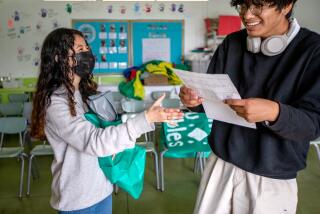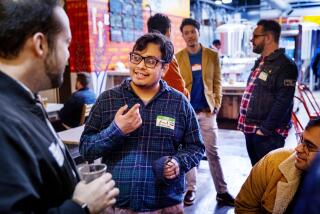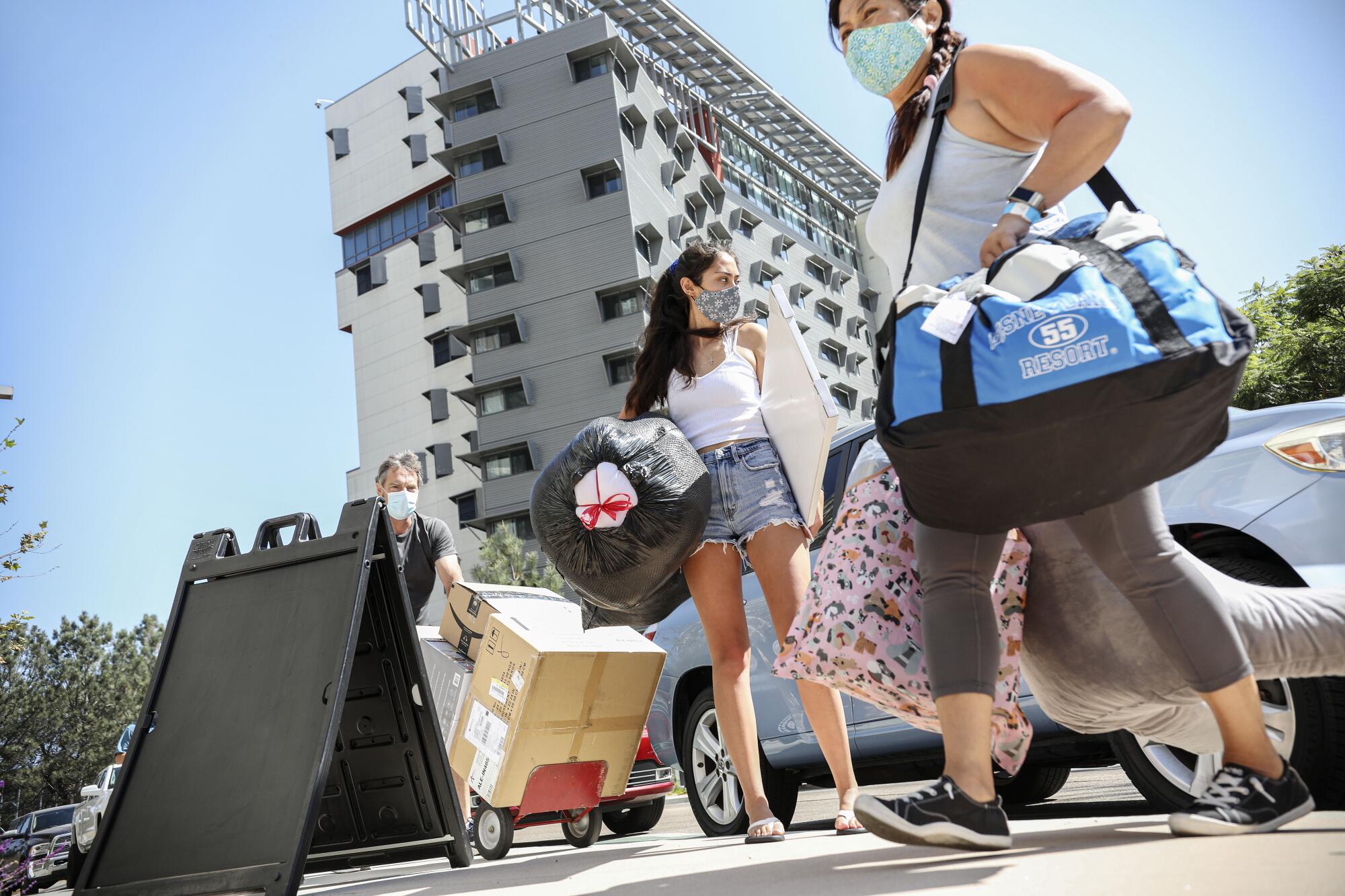
- Share via
SAN DIEGO — With 882 students testing positive or likely to be positive, San Diego State University is reeling from an outbreak of COVID-19. Is the same thing about to happen at UC San Diego?
The answer will begin to emerge as 7,500 undergraduates start to move into meticulously cleaned dorms on the sprawling La Jolla campus for the start of the fall quarter.
UC San Diego has been running drills that simulate mass infections, but even that may not have fully prepared the university for what it is about to face as it begins its 60th year.
College students nationwide have been shrugging off the pandemic, leading to tens of thousands of COVID-19 infections and billions of dollars in costs. The trouble spots include San Diego State, which is providing mostly online classes to about 35,000 students this fall, most of whom won’t be on campus due to the pandemic.
However, the university wanted to offer a semblance of normalcy to some of its youngest students, so it put 2,600 of them in dorms, with the proviso that everyone wear masks and practice social distancing. But San Diego State didn’t pressure students to comply or require that everyone get tested for COVID-19.
Many students ended up ignoring the rules, especially in the “party” section of the College Area neighborhood.
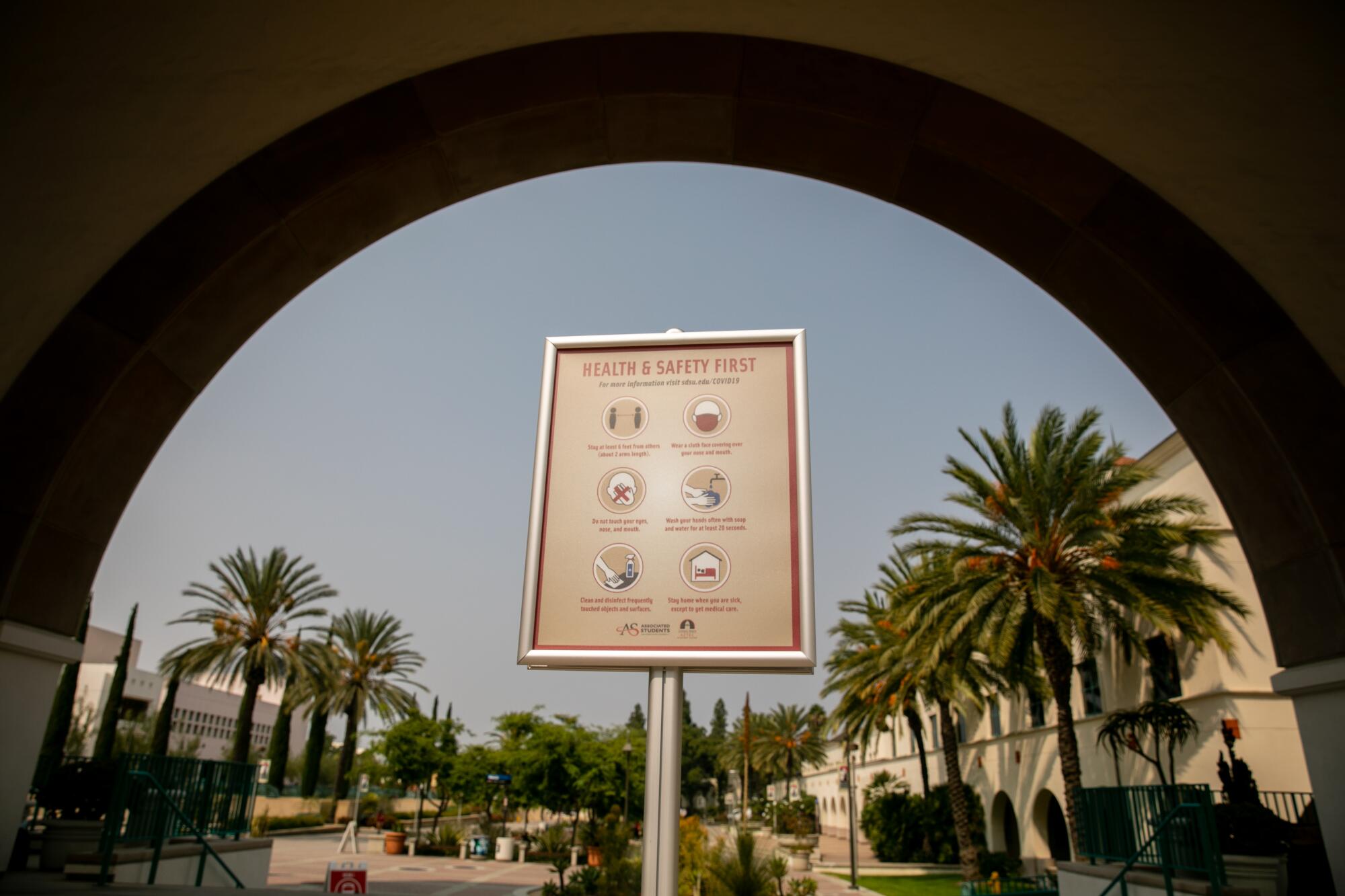
At a bash on Pontiac Street, about 35 students had to squeeze past each other to get around. Not far away, other barefaced students lingered outside the Paseo Place housing complex, two blocks from the student health center.
Within two weeks, the coronavirus was spreading rapidly. Dorm students were placed in quarantine. The small number of in-person classes were shifted online. The campus enlisted administrators to help patrol the streets for students shirking the rules. And San Diego State last week finally began requiring dorm students to be tested for the coronavirus.
“The university knew over the summer that students were having parties in the College Area and that they could spread the virus, but they did not do enough to make sure things wouldn’t get out of hand,” said Scott Kelley, a microbiologist at San Diego State who studies how aerosols spread indoors.
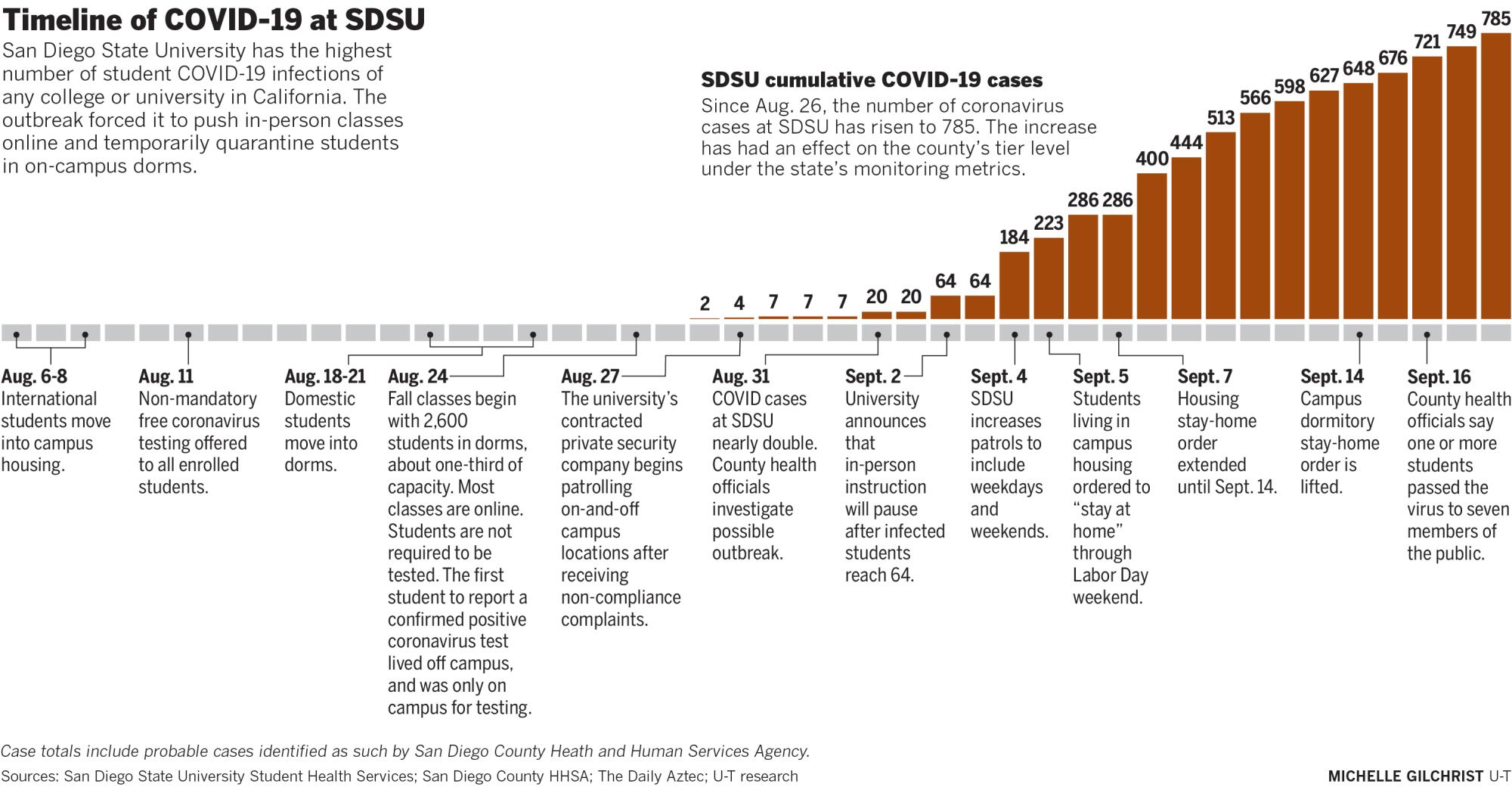
The school’s neighbors in the College Area are worried about being infected by students. County health officials say students have already spread the virus to at least seven people outside the San Diego State community.
Less than 20 miles away, UC San Diego has been planning what it should do when 38,000 students begin the fall quarter Sept. 28 with a slate of mostly online classes.
About 11,000 undergraduate and graduate students will live in campus housing.
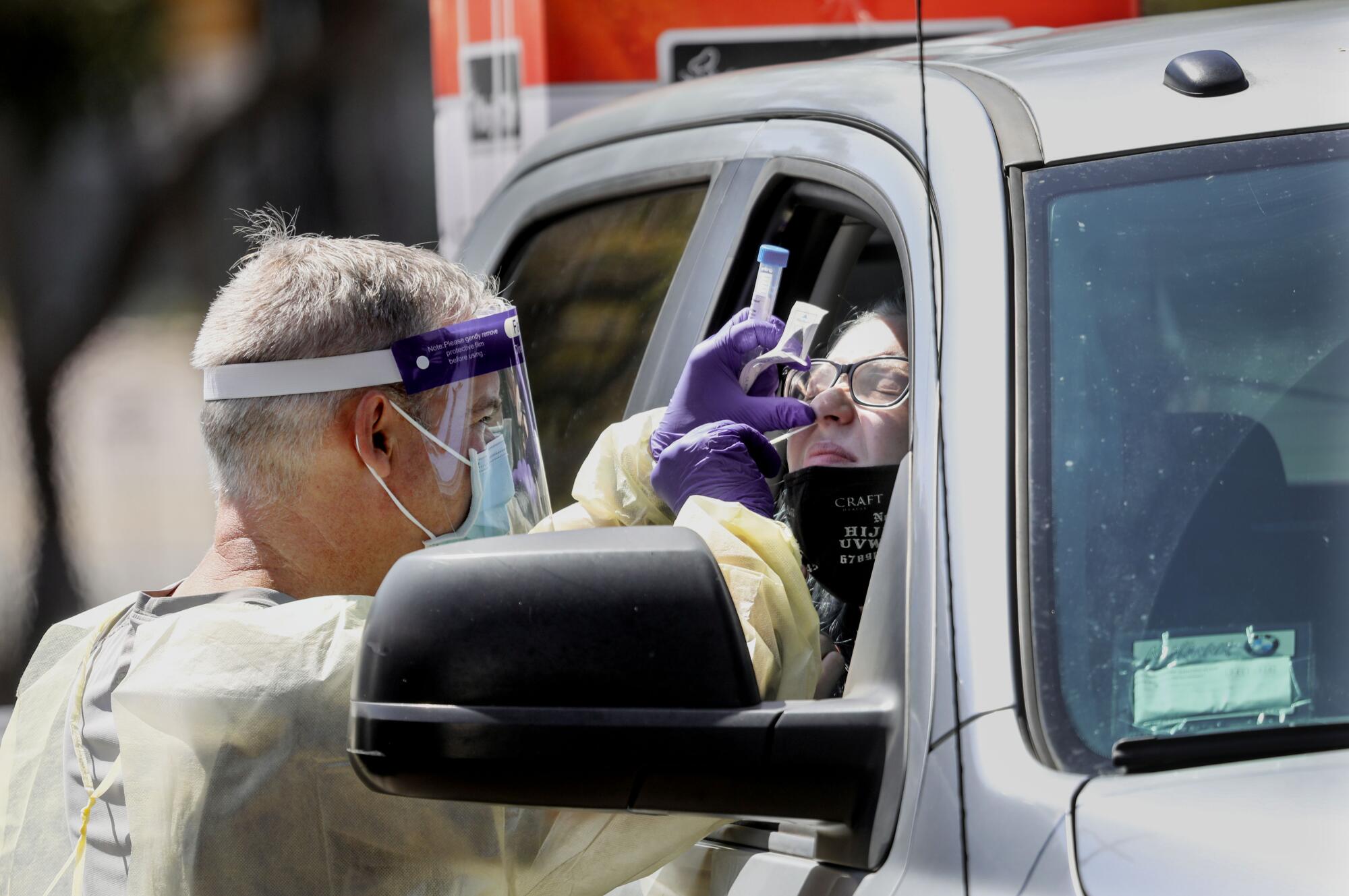
The university will conduct regular mandatory testing, monitor waste water for the virus and promote use of a cellphone app that tells users if they’ve had contact with infected people.
UC San Diego will also have student ambassadors moving about, helping to coax students to wear masks and stay six feet apart.
The stakes are high.
“If we can’t open the school in a way they can stay here, we’ve got to either close the school or lock them down in dorm rooms,” said Dr. Robert T. “Chip” Schooley, a professor of medicine who is helping guide UC San Diego’s “Return to Learn” program.
“Nobody wants to spend the next four years with what they hoped would be their college lives in their grandmother’s attic with an iPad, looking at lectures on Zoom.”
The campus predicts that few of the 7,500 undergraduates moving into dorms will test positive for the virus. And those who do will be quickly isolated.
“Maybe it will be 30, maybe it will be 20, maybe it will be 40,” said Dr. Angela Scioscia, interim executive director of Student Health and Wellbeing at UC San Diego. “I don’t expect 100 [infections]. That would be a bit of a surprise.”
Internal dissent
There’s concern that officials of the UC San Diego campus, which has seen 264 people test positive for the virus since March, are suffering from hubris. And much of that concern comes from within the school, which rarely airs its problems publicly.
More than 600 students, faculty, staff and alumni recently issued an open letter asking the university to drop plans to repopulate its dorms and offer some in-person classes — key components of the Return to Learn program.
“The university’s refusal to acknowledge fears about Return to Learn, as well as the release of recent data on the university’s budget and finances, suggests that the university is being run as a business rather than as a community and that financial incentives are being prioritized at the expense of community well-being,” the open letter says.
The signatories included history professor Cathy Gere.
“The idea that we can dictate student behavior and roll out technical solutions has been shown again and again to be demonstrably untrue,” Gere said.
The full scope of the problem facing college campuses — and their surrounding communities — isn’t known.
But a New York Times survey of more than 1,600 colleges and universities says that at least 88,000 students, faculty and staff have tested positive since the pandemic began, and at least 60 have died.
The survey, last updated Sept. 10, says San Diego State has the highest number of infections of any college in California. UC San Diego, which has a medical school, two hospitals and a healthcare network, ranked third.
Technological advantage
A series of jolting images has crystallized the indifference of many students to the pandemic.
Several students at Miami University in Ohio who tested positive were filmed hosting a large party for classmates. At Indiana University, dozens of students were videotaped jammed together, mingling, without wearing masks, on party boats. And University of Wisconsin students were photographed moving out of a dorm due to an outbreak.
The images — and the trouble at San Diego State — have not led UC San Diego to back away from Return to Learn. Nor did they deter Point Loma Nazarene University, which just added 526 dorm students, or the University of San Diego, which is adding 519 this weekend.
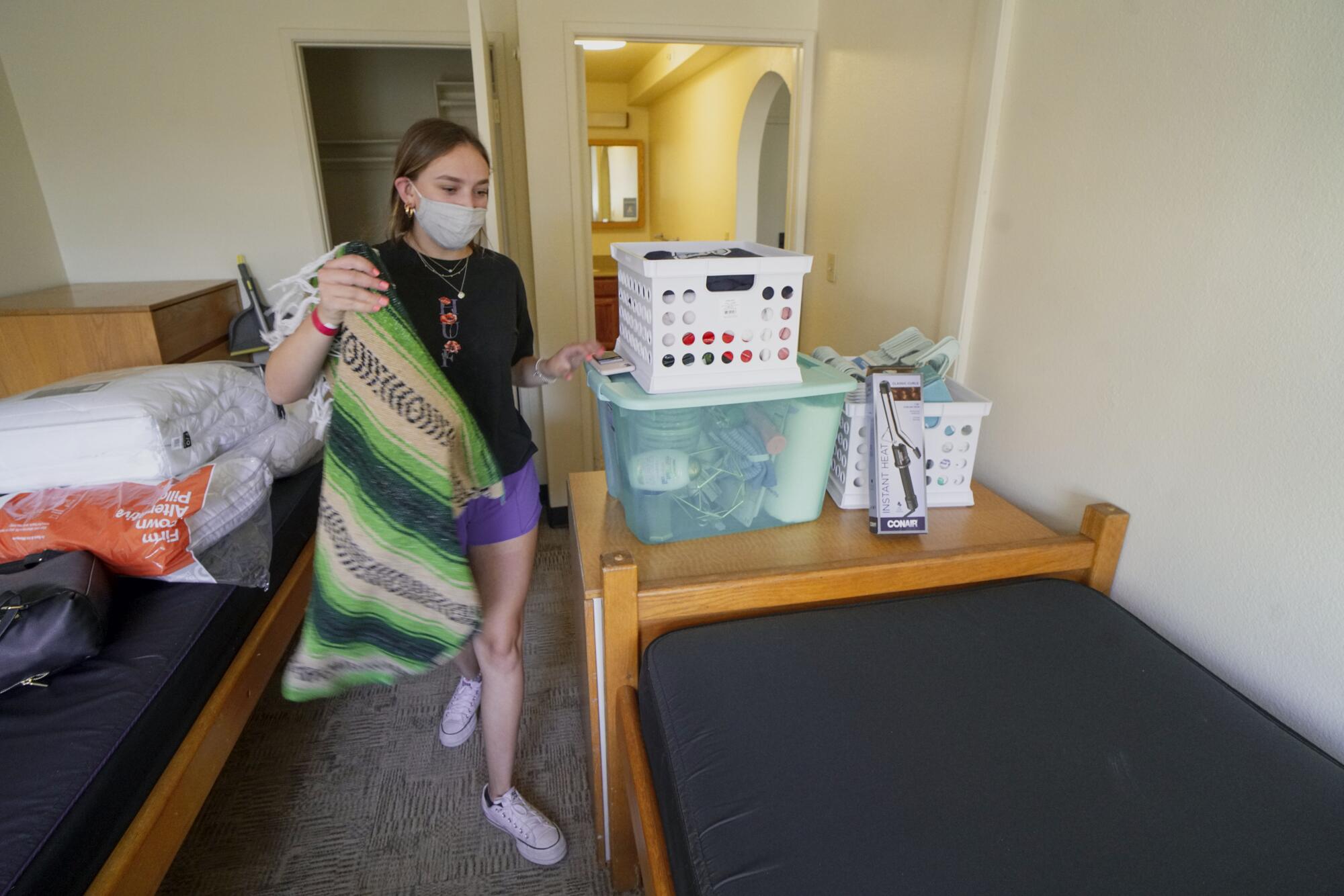
The schools say young students fare better academically when they live on or near campus. Students also have been pushing schools to open the dorms so that they can experience college life.
Meanwhile, UC San Diego is flexing its muscles as one of the nation’s 10 largest research schools. On average, the campus pulls in $4 million a day in new research money, the majority of which goes to health and medicine. UCSD is helping to run two major COVID-19 vaccine trials and is working on numerous therapeutic drugs to fight the virus.
The university also found ways to more quickly and cheaply test people for COVID-19, an advance it’s about to exploit.
UC San Diego will test new undergraduate dorm students when they arrive and again 12 to 16 days later. It added the second test after noticing that this was an effective strategy at other schools. Testing will continue, at intervals, through the fall.
Additionally, UC San Diego is making the most of a time advantage — classes begin about a month later than at most schools, so it has more time to tweak Return to Learn.
The university is putting together a system to continually check waste water for the presence of the virus, which can show up in fecal matter, highlighting the location of infections.
During a recent drill, UCSD unexpectedly found the virus in the Revelle College area at the south end of campus. The school quickly tested about 700 people and found two who were the source of the reading. They were placed in isolation.
This “totally transforms our ability to respond to an outbreak,” sad Rob Knight, a biologist at UC San Diego who studies microbes. “Everyone poops, right? This allows us to find populations [of people] who are infectious that are otherwise inaccessible. The waste water signal shows up as much as a week before people start having symptoms and showing up in the clinic. So it gives us an excellent warning system, especially to test asymptomatic students.”
UC San Diego hopes to have the system fully operational in October.
Additionally, the university received permission from the state last week to test exposure notification technology from Apple and Google that uses Bluetooth in cellphones to inform students and staff when they have come into contact with someone who is infected.
“If I get COVID-19, I’m going to tell my family right away. But I may not remember or even know everybody that I’ve encountered in the last two weeks,” said Dr. Christopher Longhurst, the chief information officer and associate chief medical officer at UC San Diego Health. “That’s where this application can help notify the people whose names and phone numbers I don’t have. It’s designed to help the community, making it safer for everyone.”
It’s unclear whether the app will play a significant role in slowing the spread of COVID-19, despite the optimism of school officials. People must choose to use the program, and some may take a pass over privacy concerns.
Apple, Google, the university and the state have said that the cellphone technology does not collect identifying information, including location data.
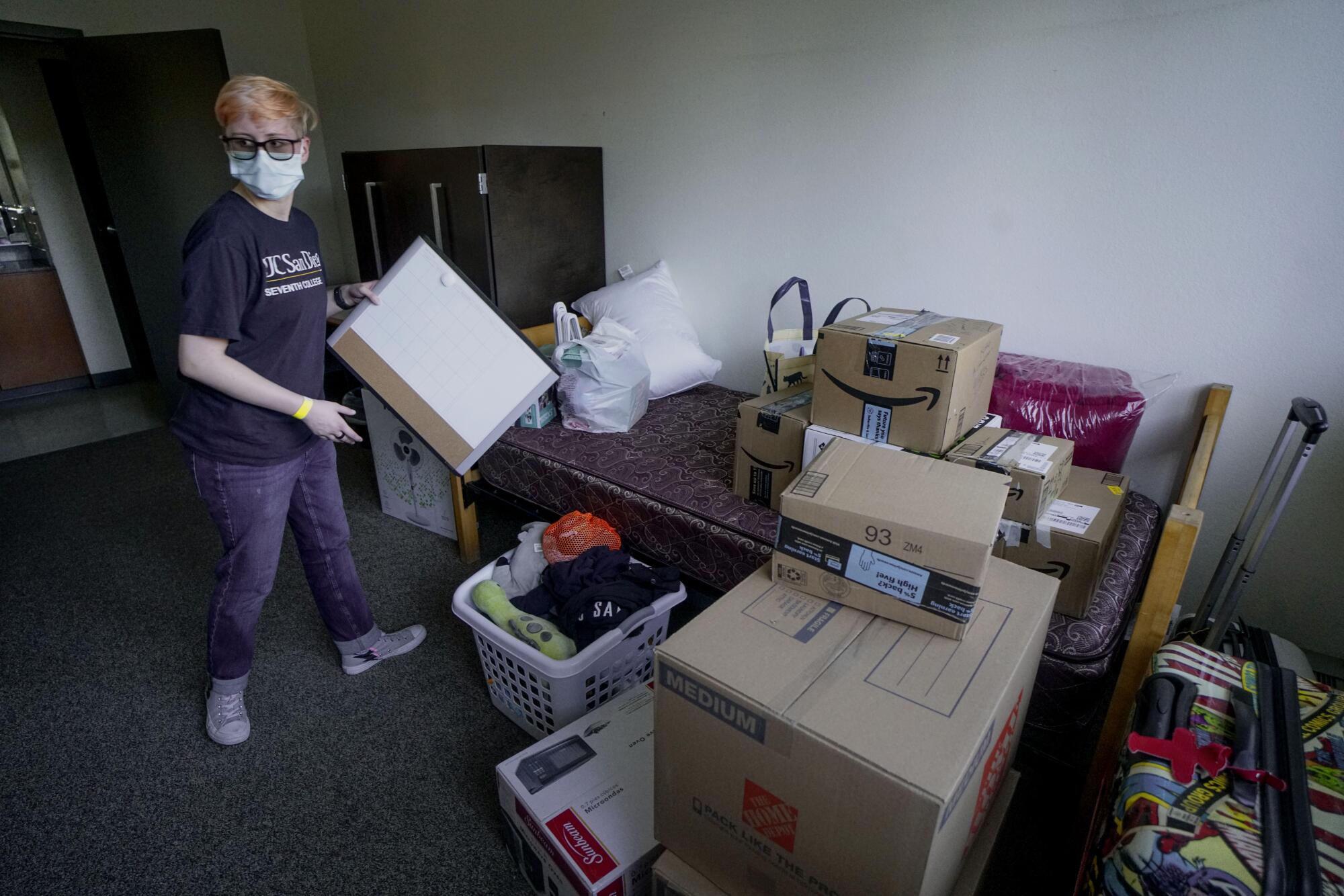
No guarantees
UC San Diego’s strategy is deep, complex and costly. But such plans won’t work without student participation, as the University of Illinois at Urbana-Champaign has learned over the past couple of weeks.
Illinois has upward of 40,000 students, all of whom were tested twice a week for the coronavirus. Many weren’t following guidelines to prevent spread. By the time Labor Day rolled around, the school was reporting more than 1,000 infections.
The lesson: Kids will be kids.
“Despite reputation to the contrary, I don’t think UCSD and SDSU students are very different,” Longhurst said. “Technology won’t change that but can help limit the size of outbreaks.”
The pressure is rising to get things right, which was evident Saturday at UC San Diego as undergraduates began moving into dorms.
They underwent drive-through testing at an isolated spot on campus. Then they reported for precisely scheduled move-in appointments that heavily emphasized social distancing. No one had to jockey for a parking spot.
Kim Peterson of Fountain Valley liked what she saw as she and her husband, Gene, pulled to the curb outside the Village residence hall to drop off their twin daughters, Grace and Ellie.
“We’ve been following the COVID situation very closely and feel really confident about UCSD’s Return to Learn program,” Kim Peterson said. “They’ve been wonderful about educating parents and students about what’s expected of students this fall.”
Grace stood nearby, holding a pillow she’d brought from home.
“UCSD is doing really good testing,” she said. “I’m really excited to be here.”
Robbins writes for the San Diego Union-Tribune.
More to Read
Sign up for Essential California
The most important California stories and recommendations in your inbox every morning.
You may occasionally receive promotional content from the Los Angeles Times.
